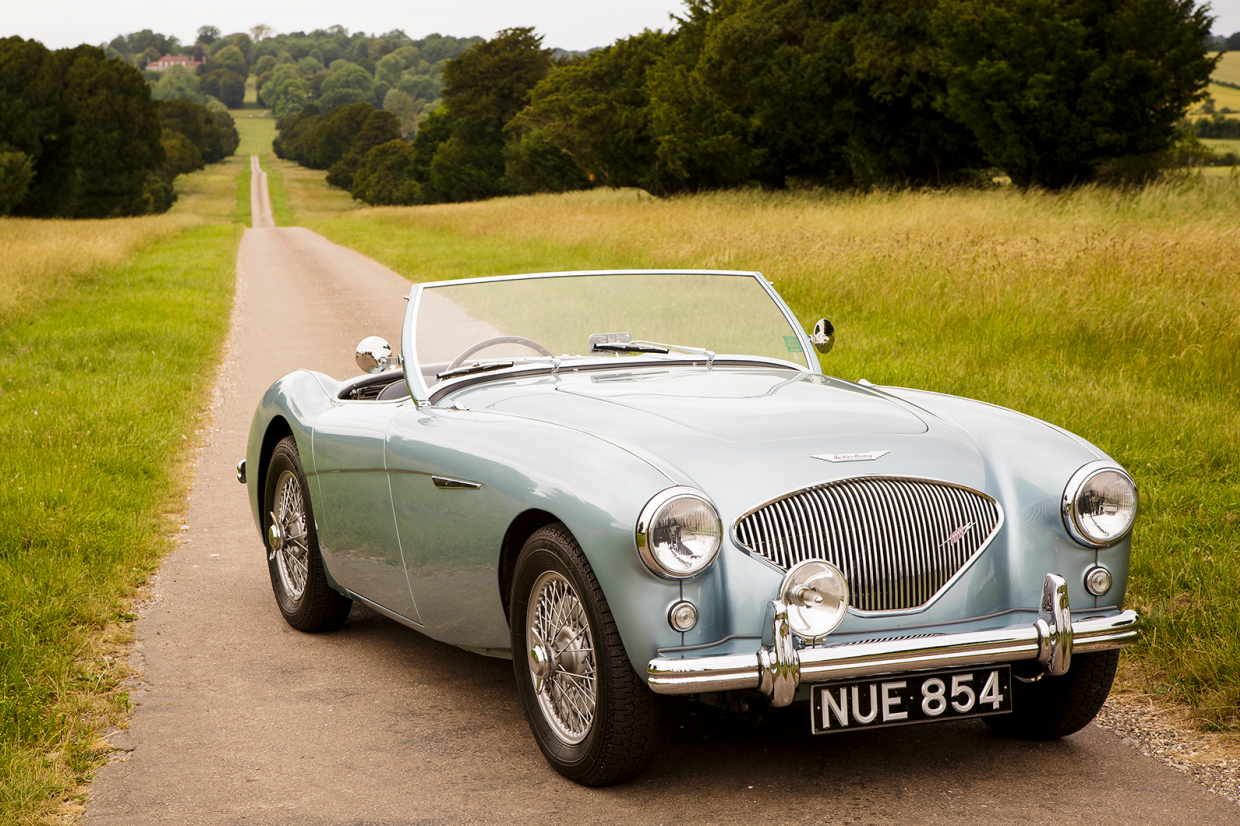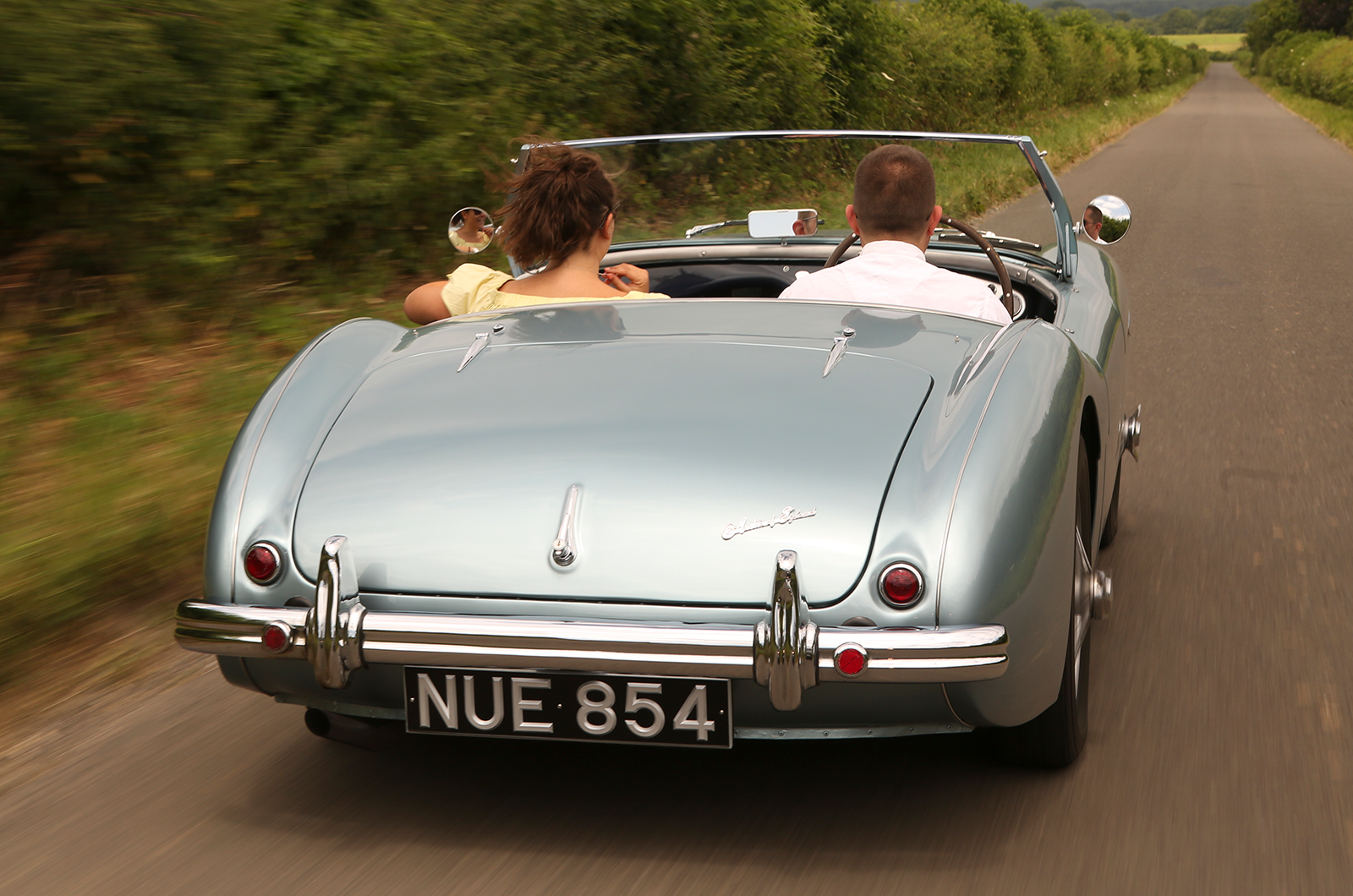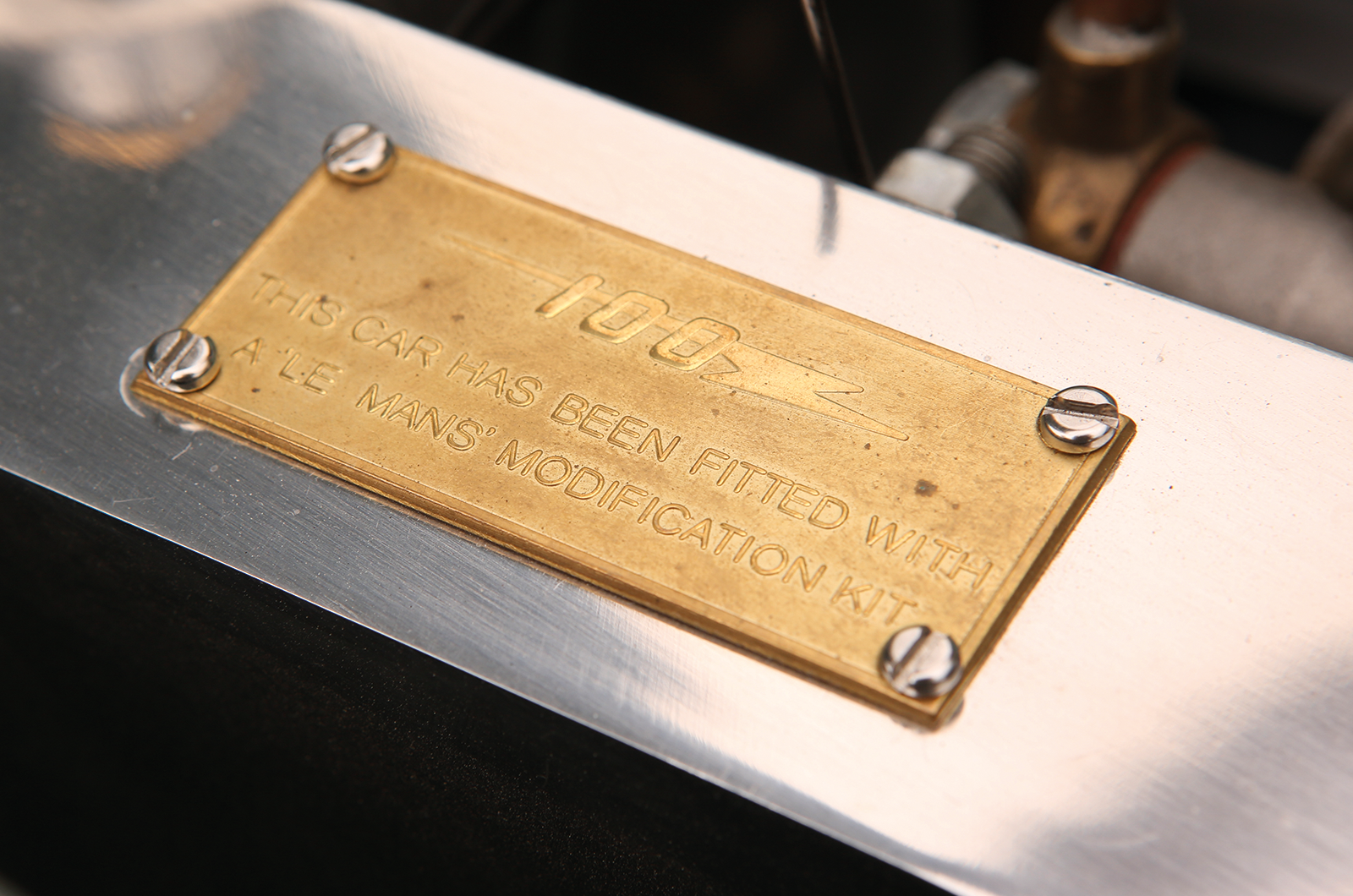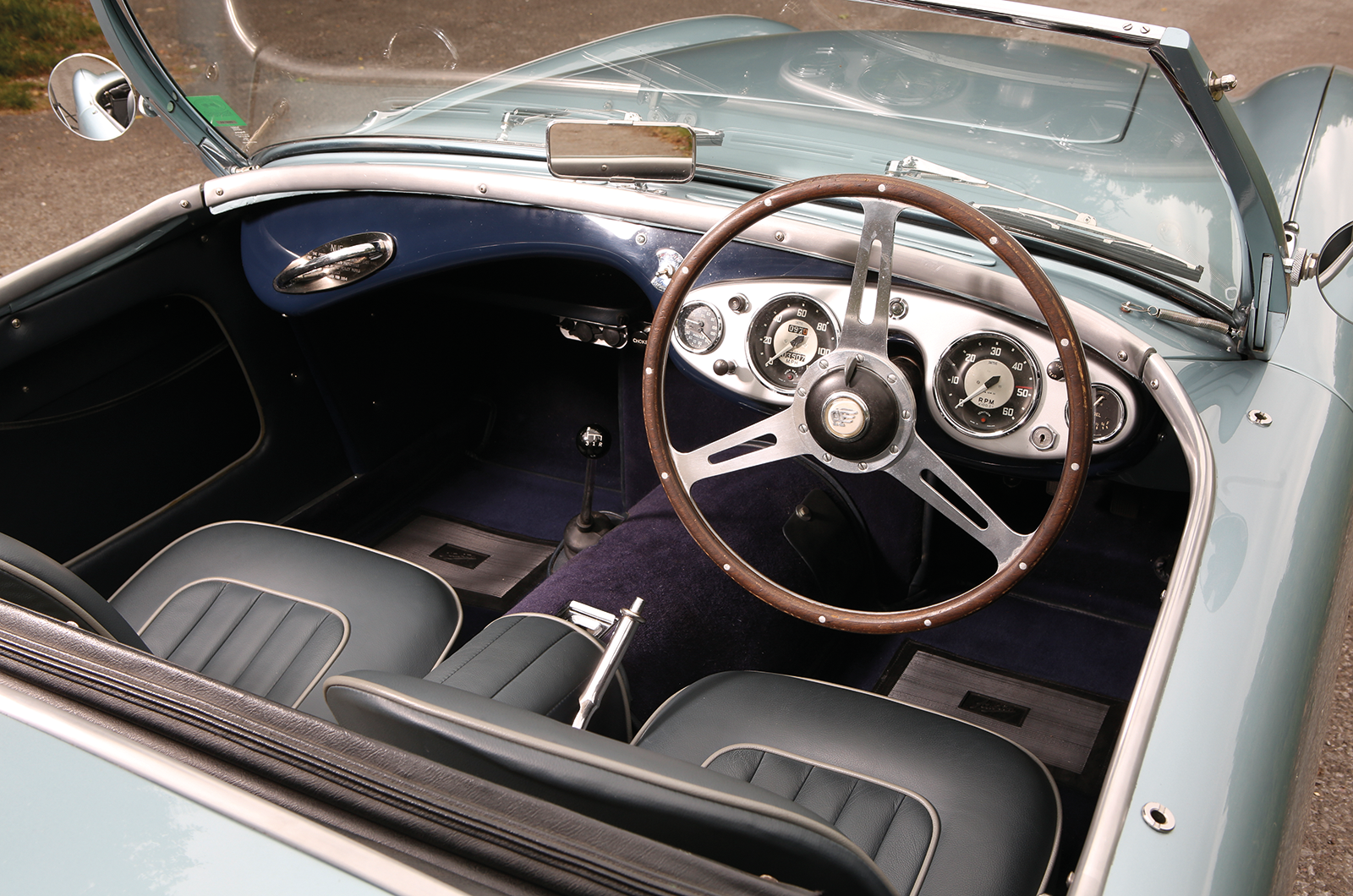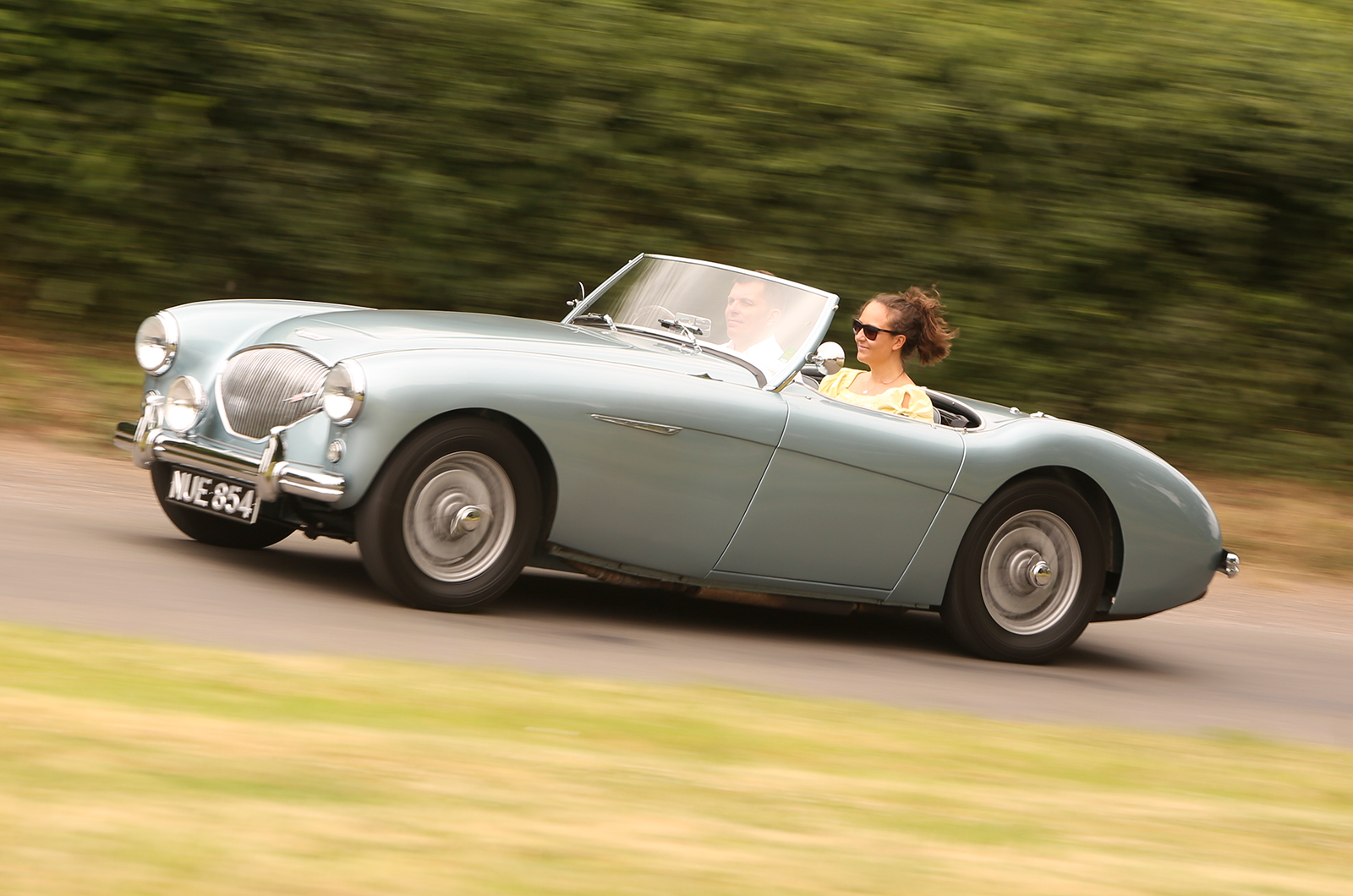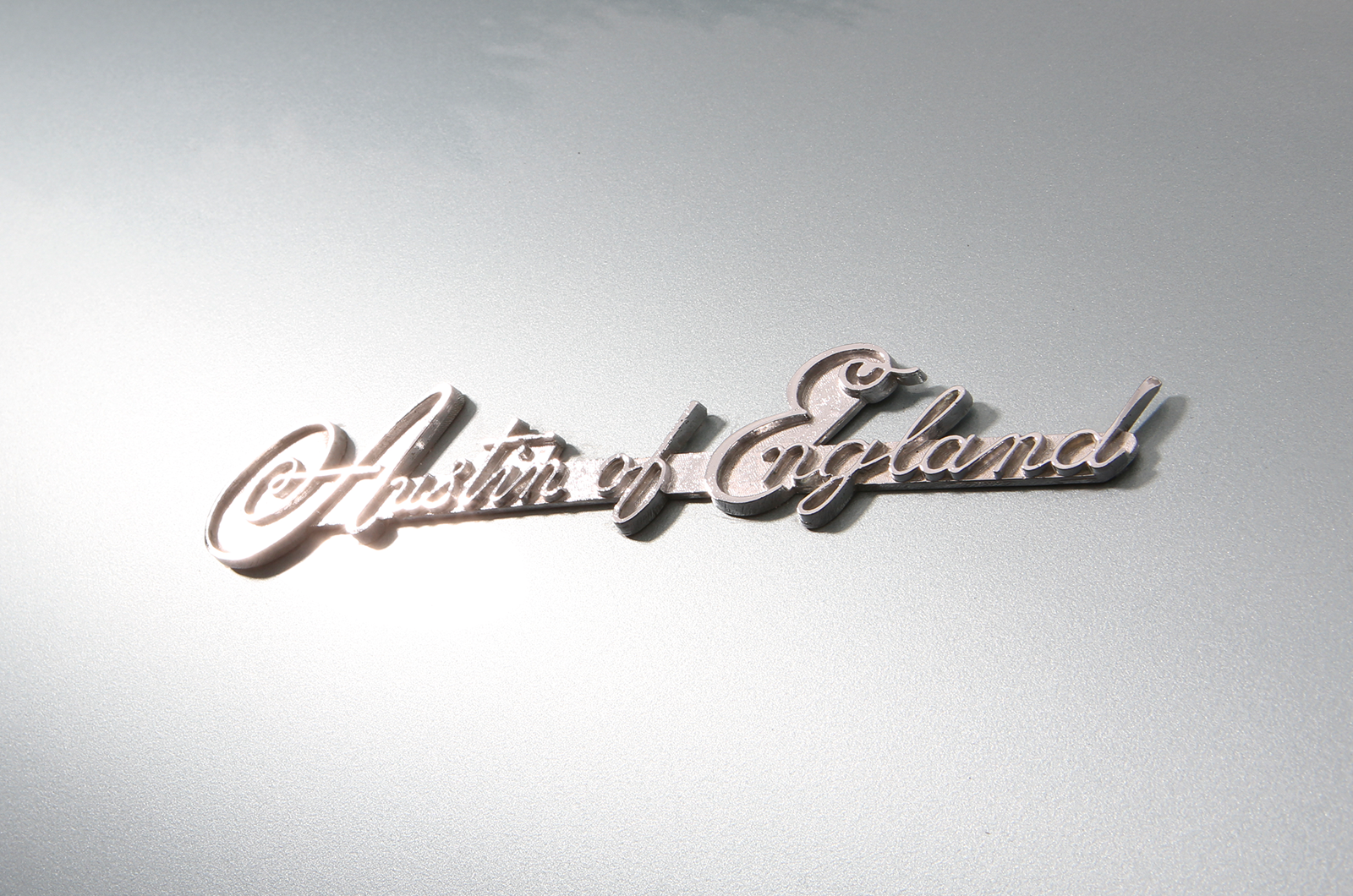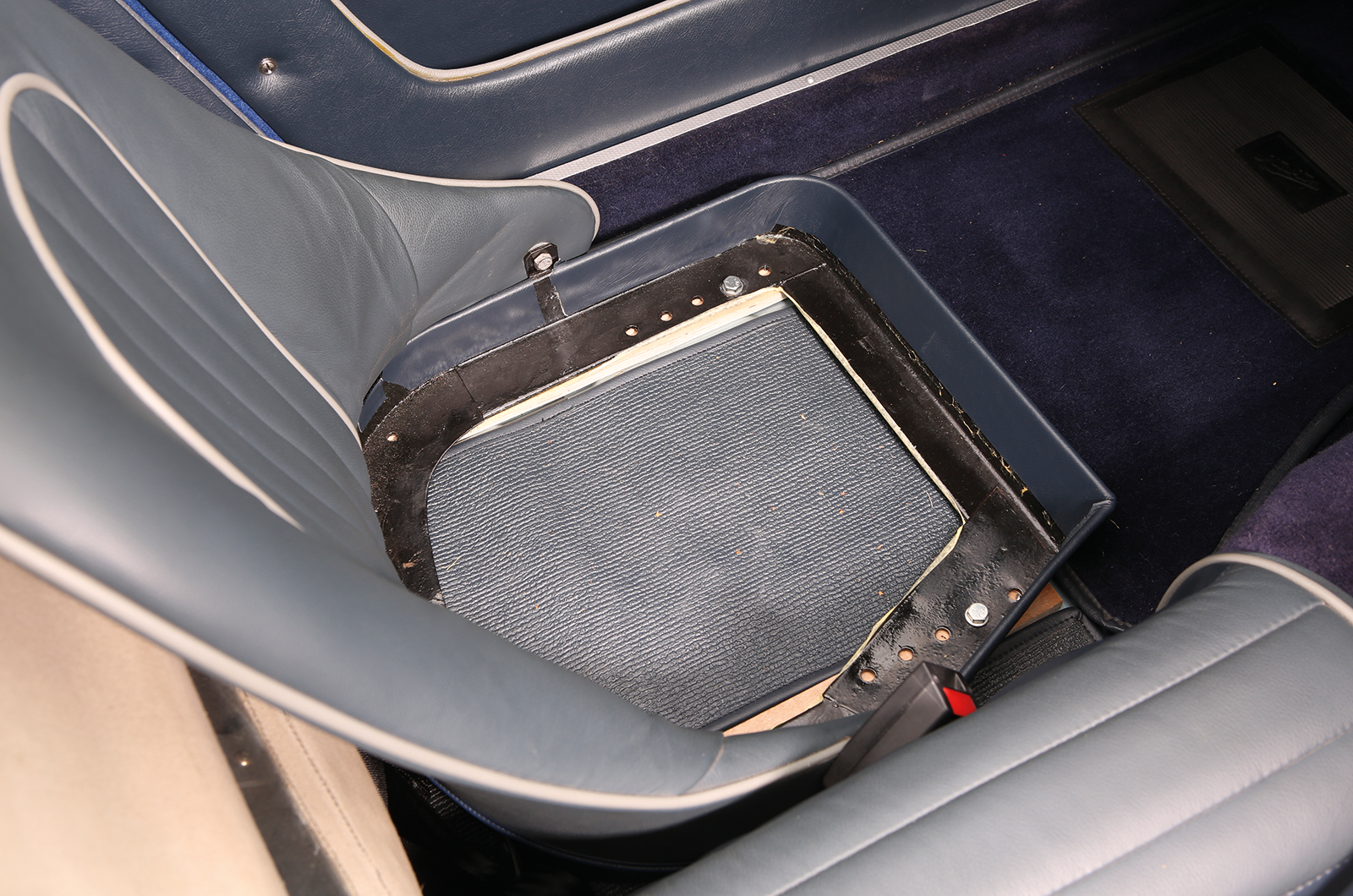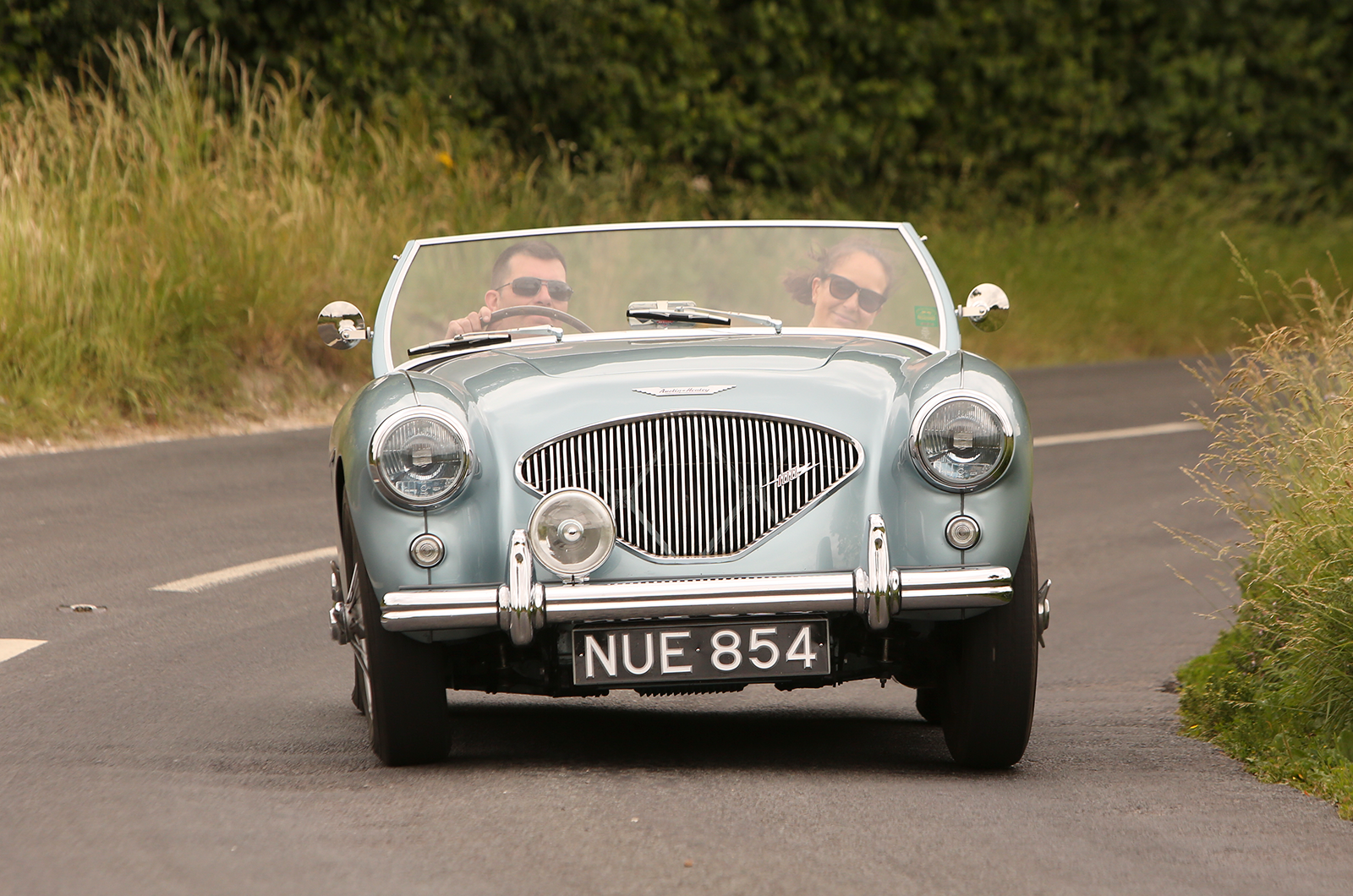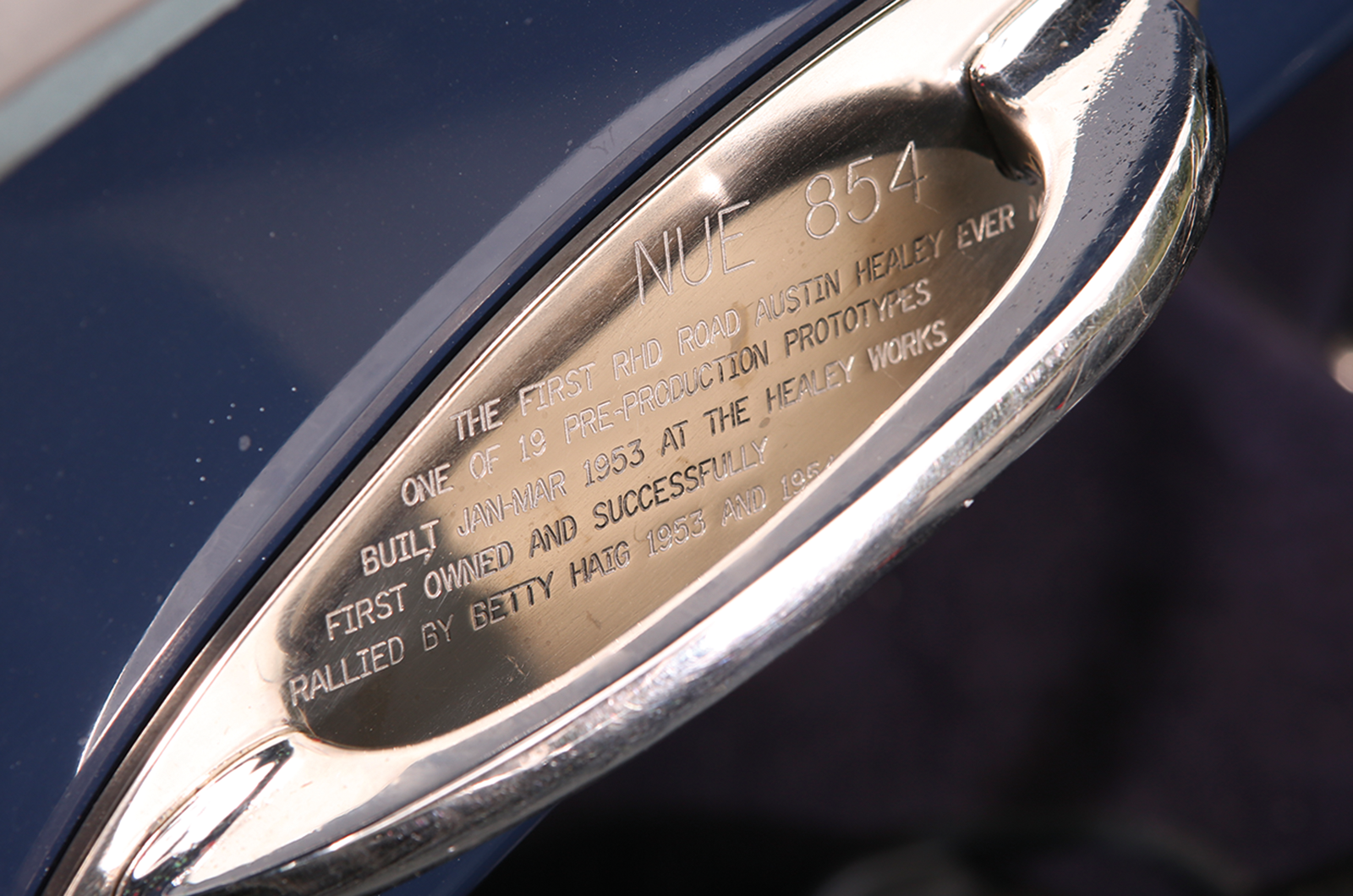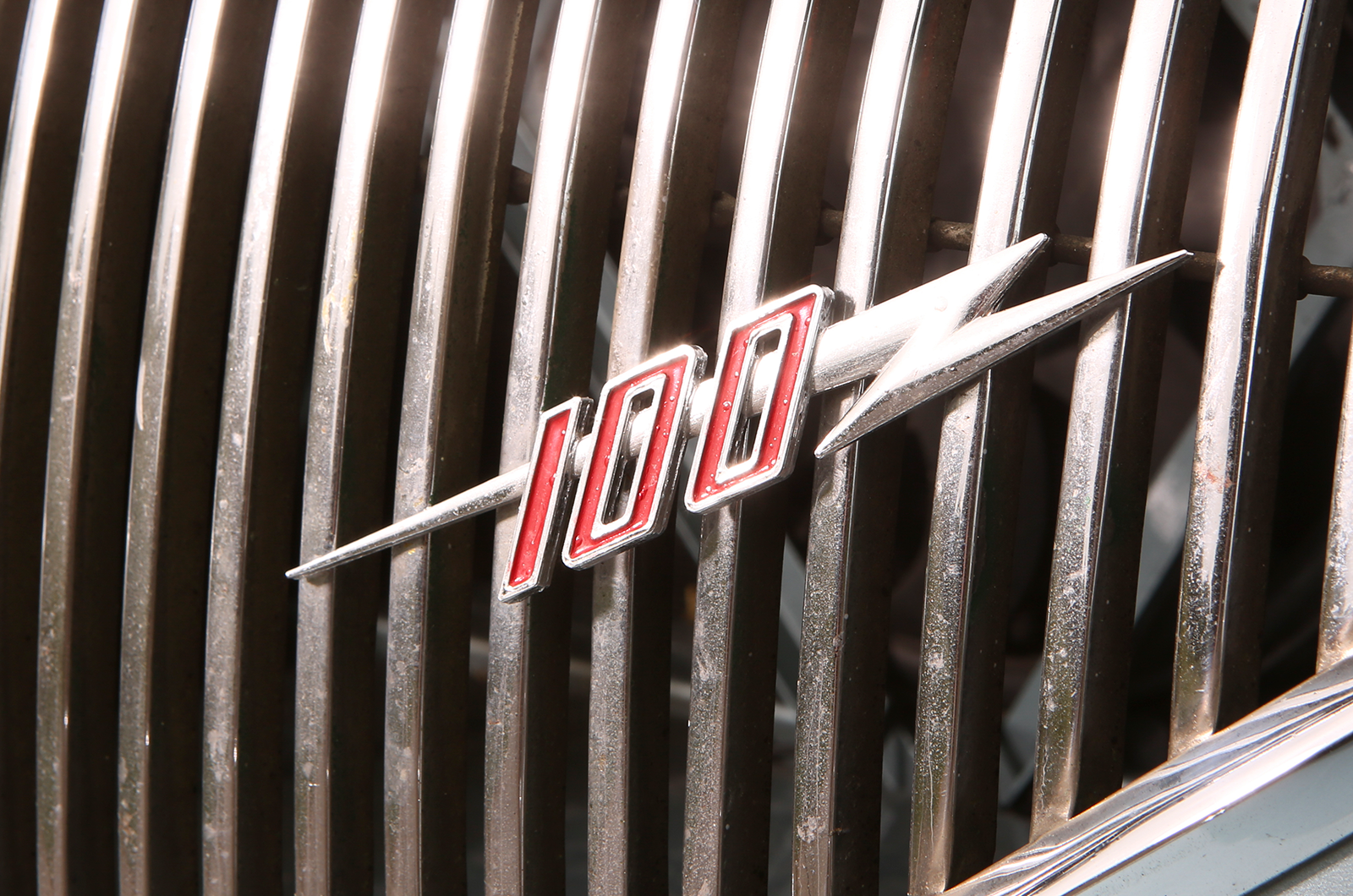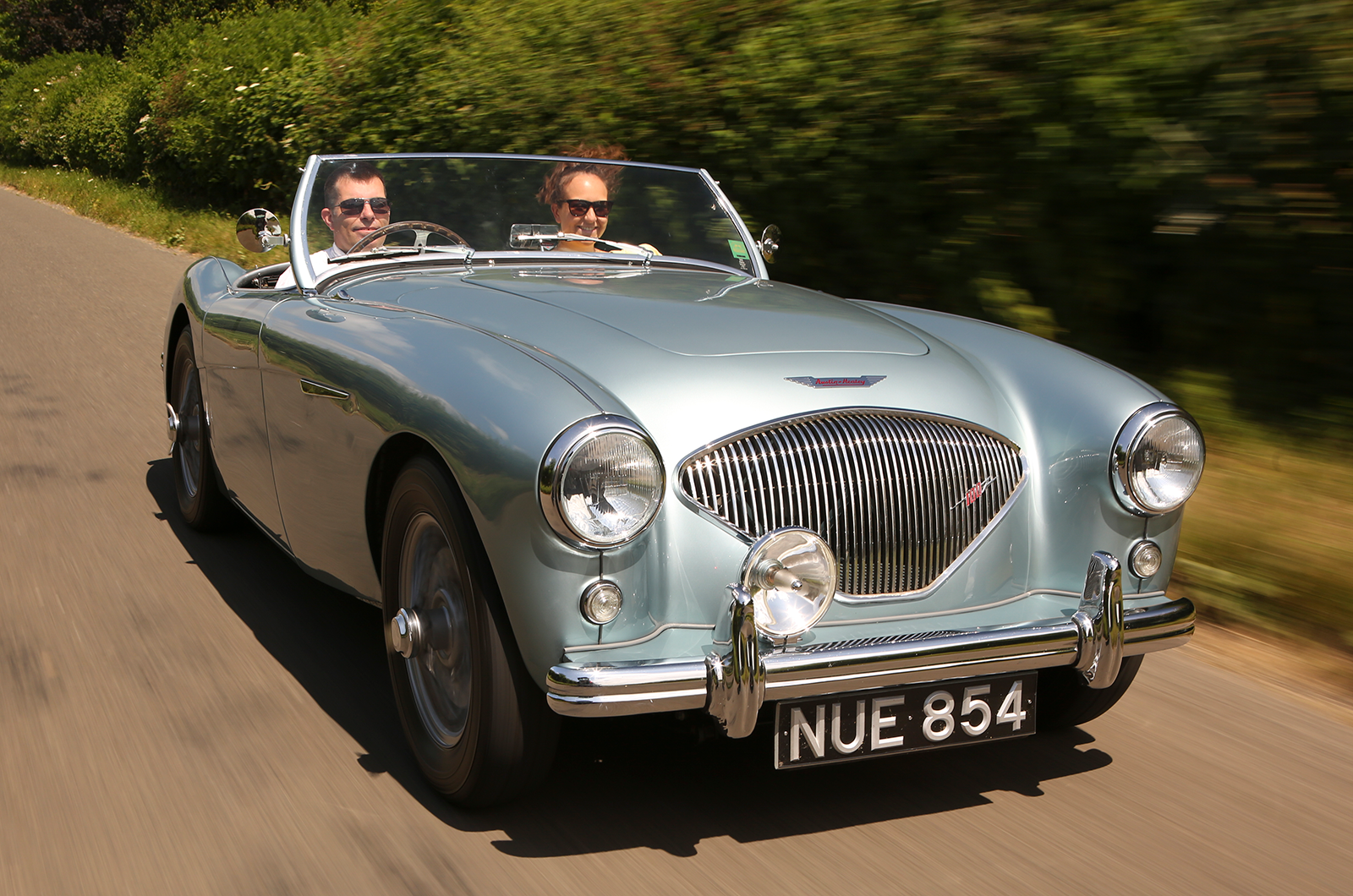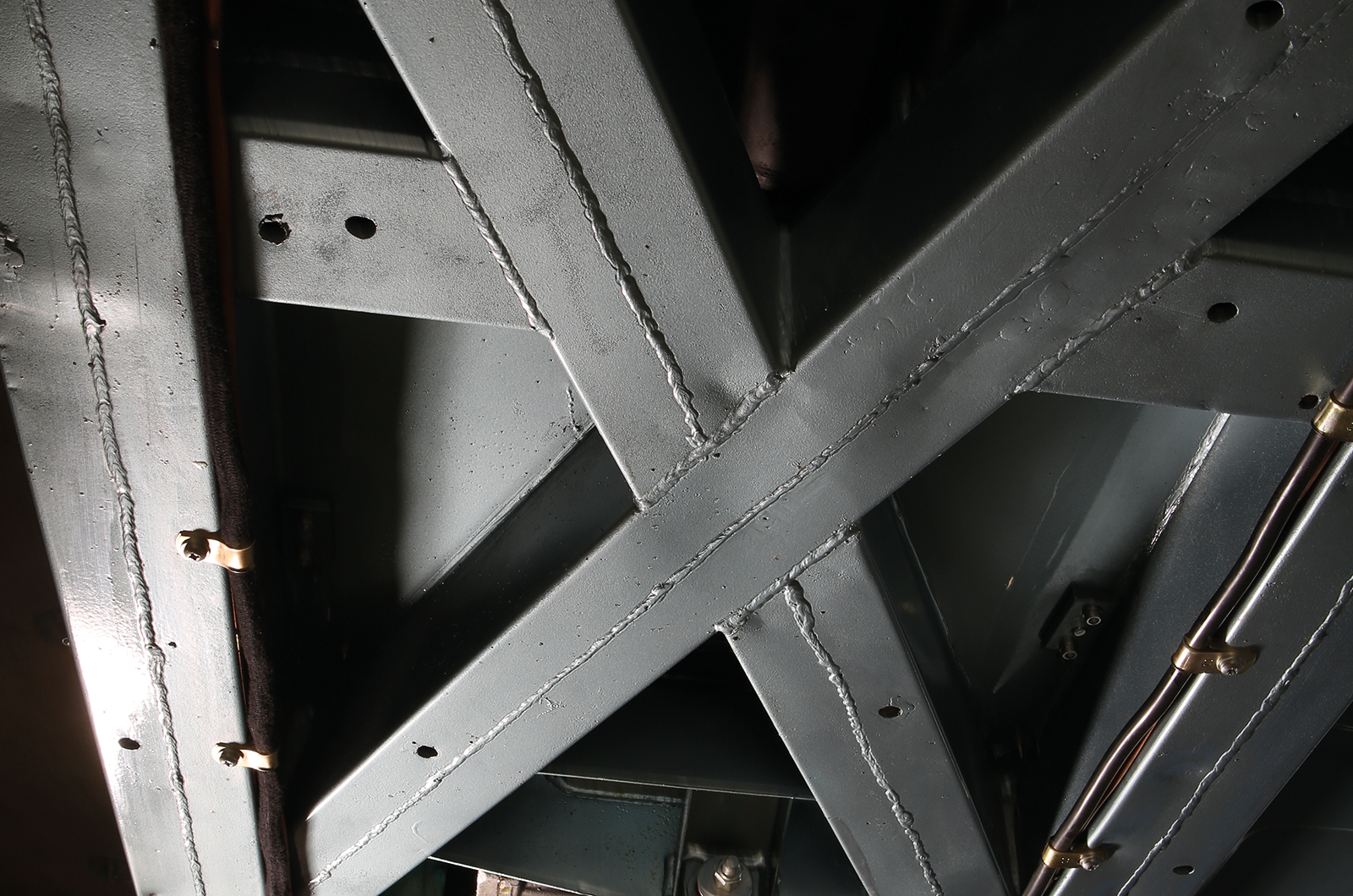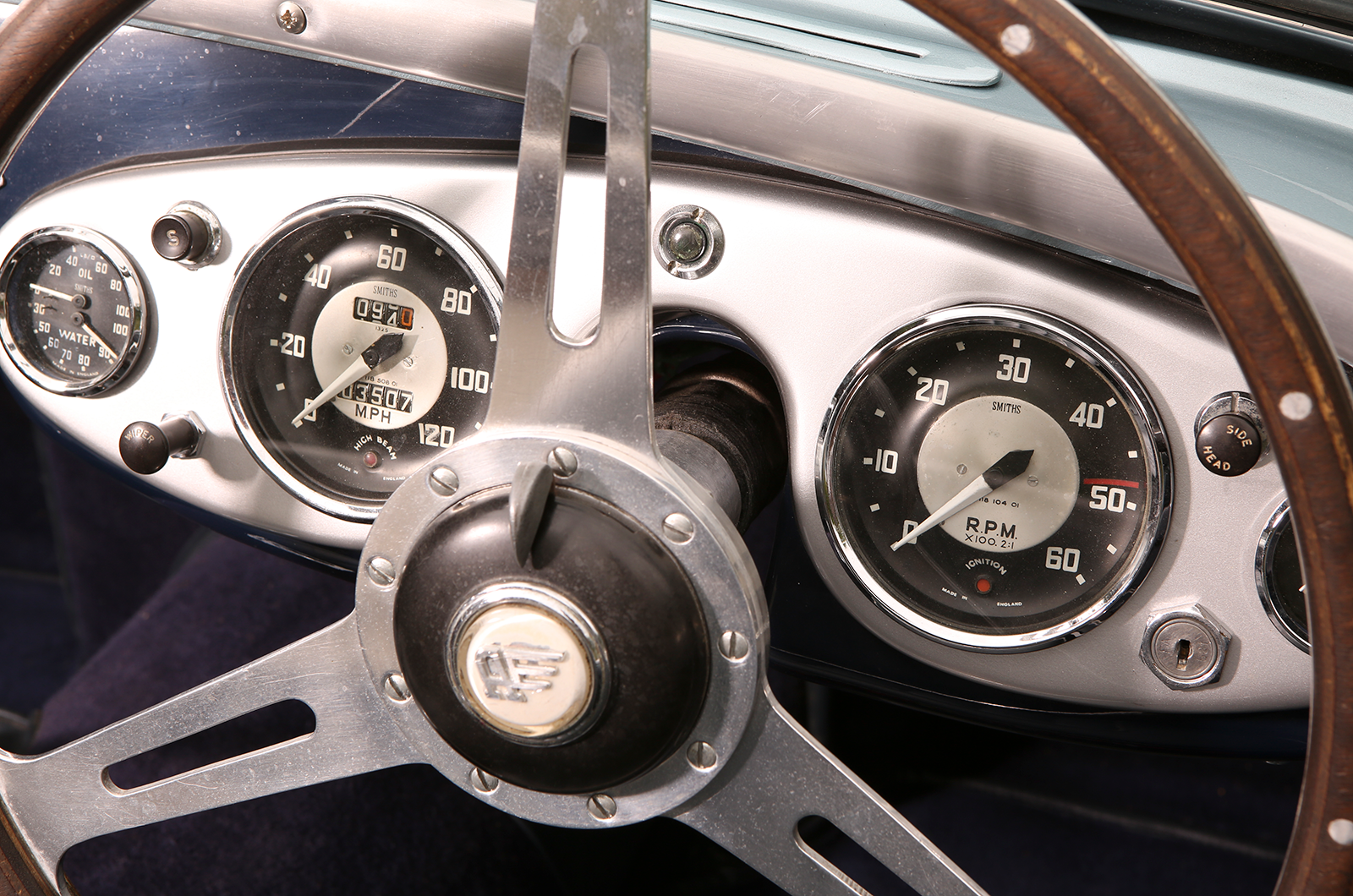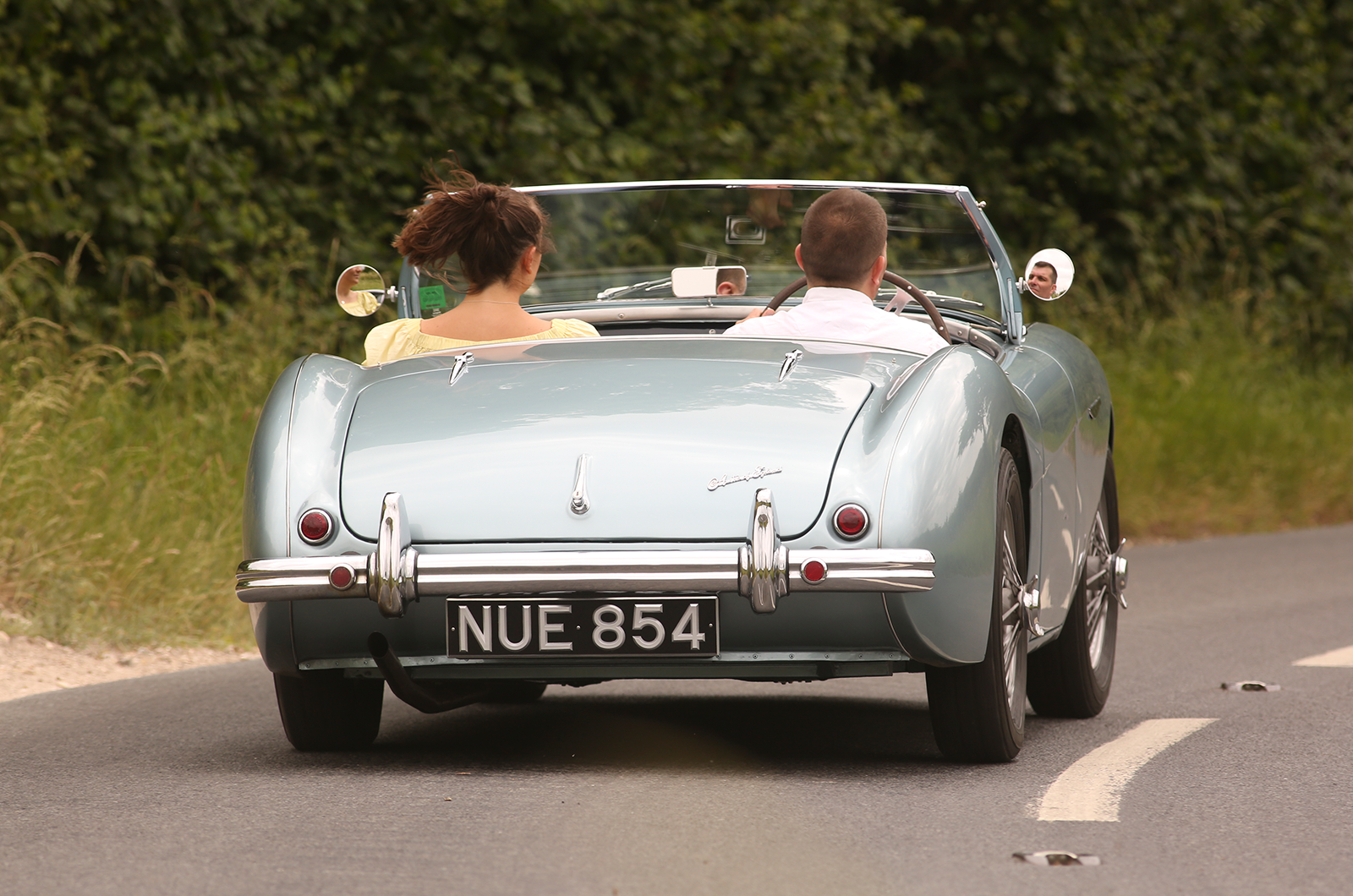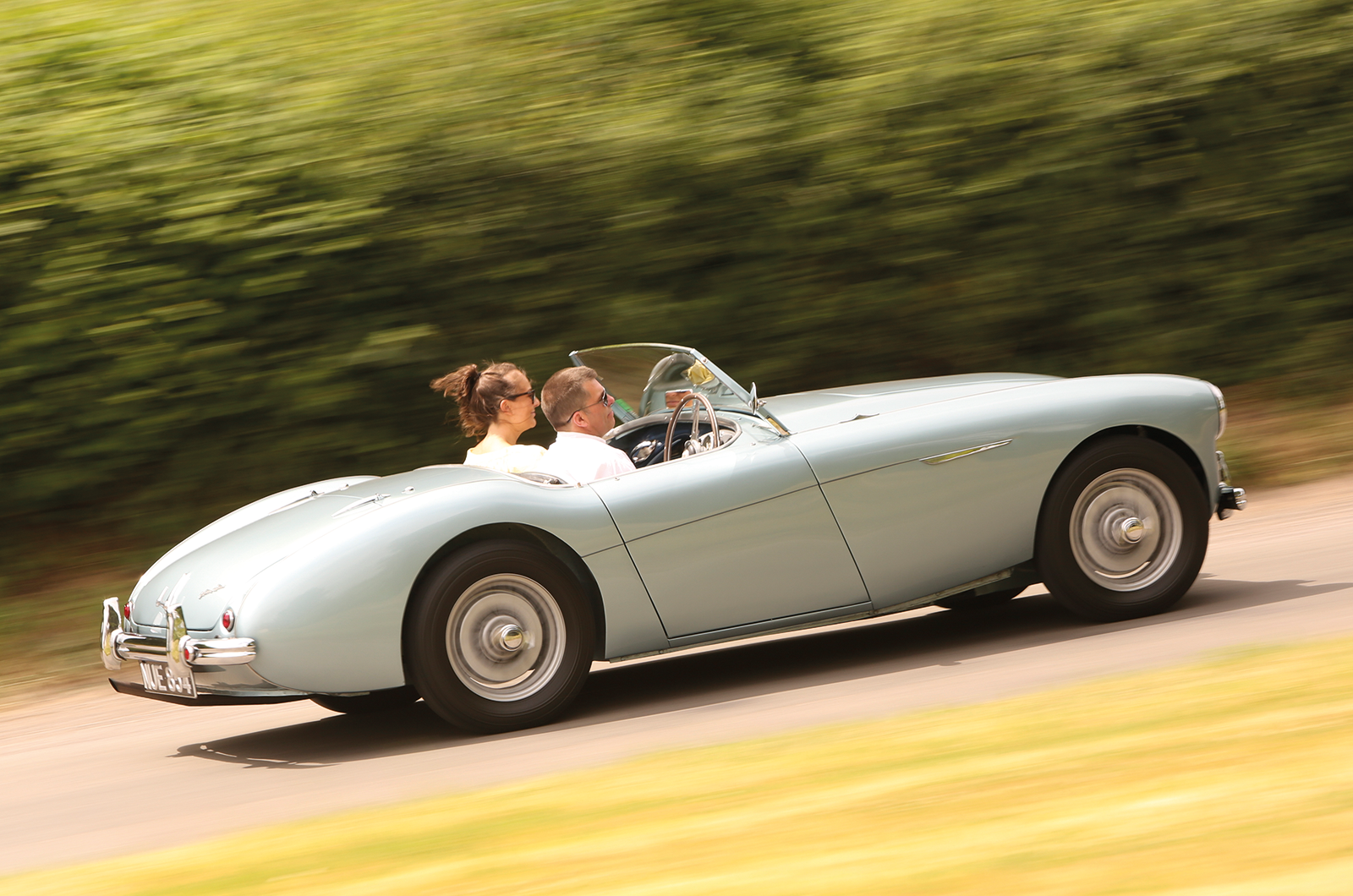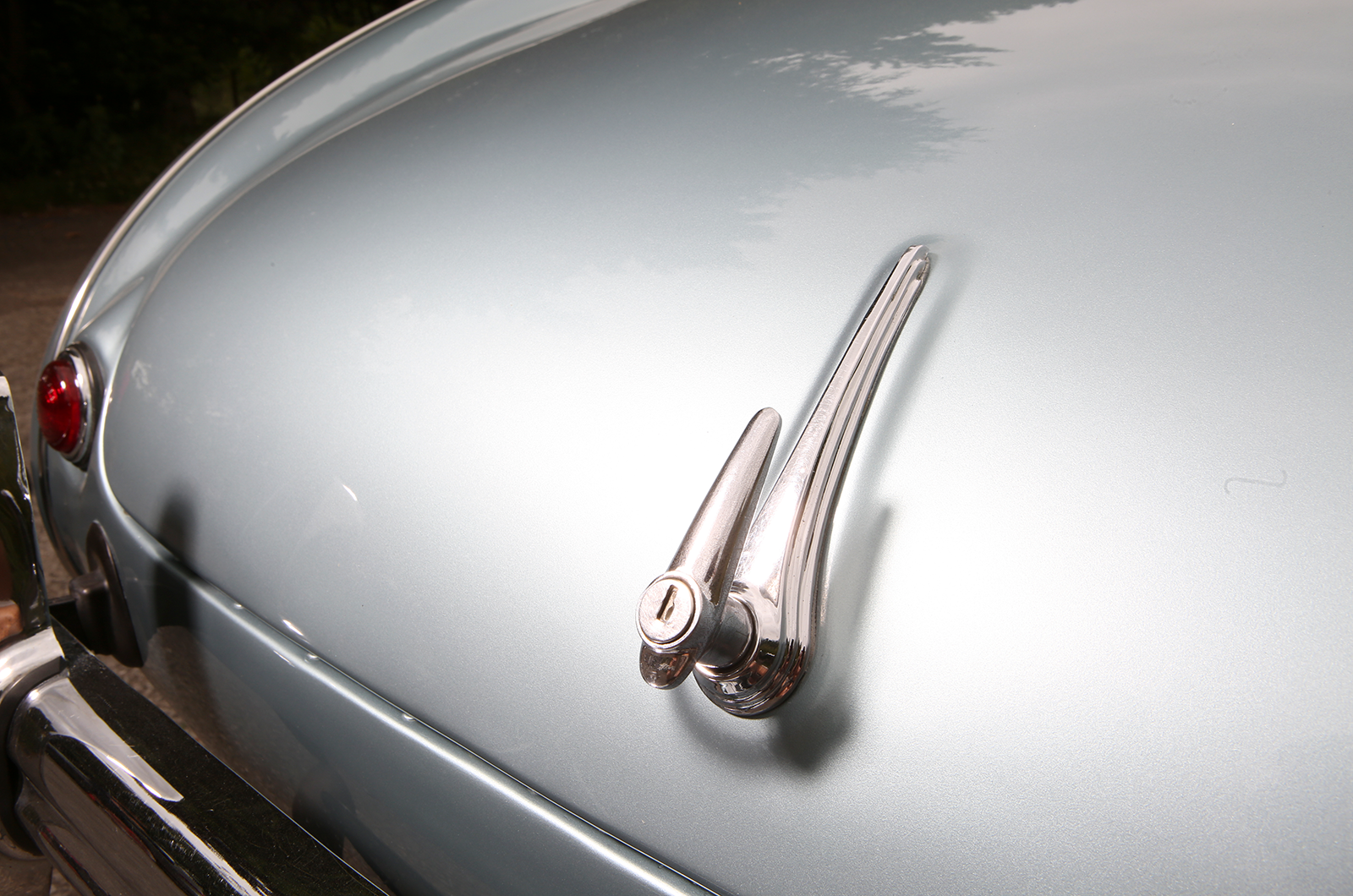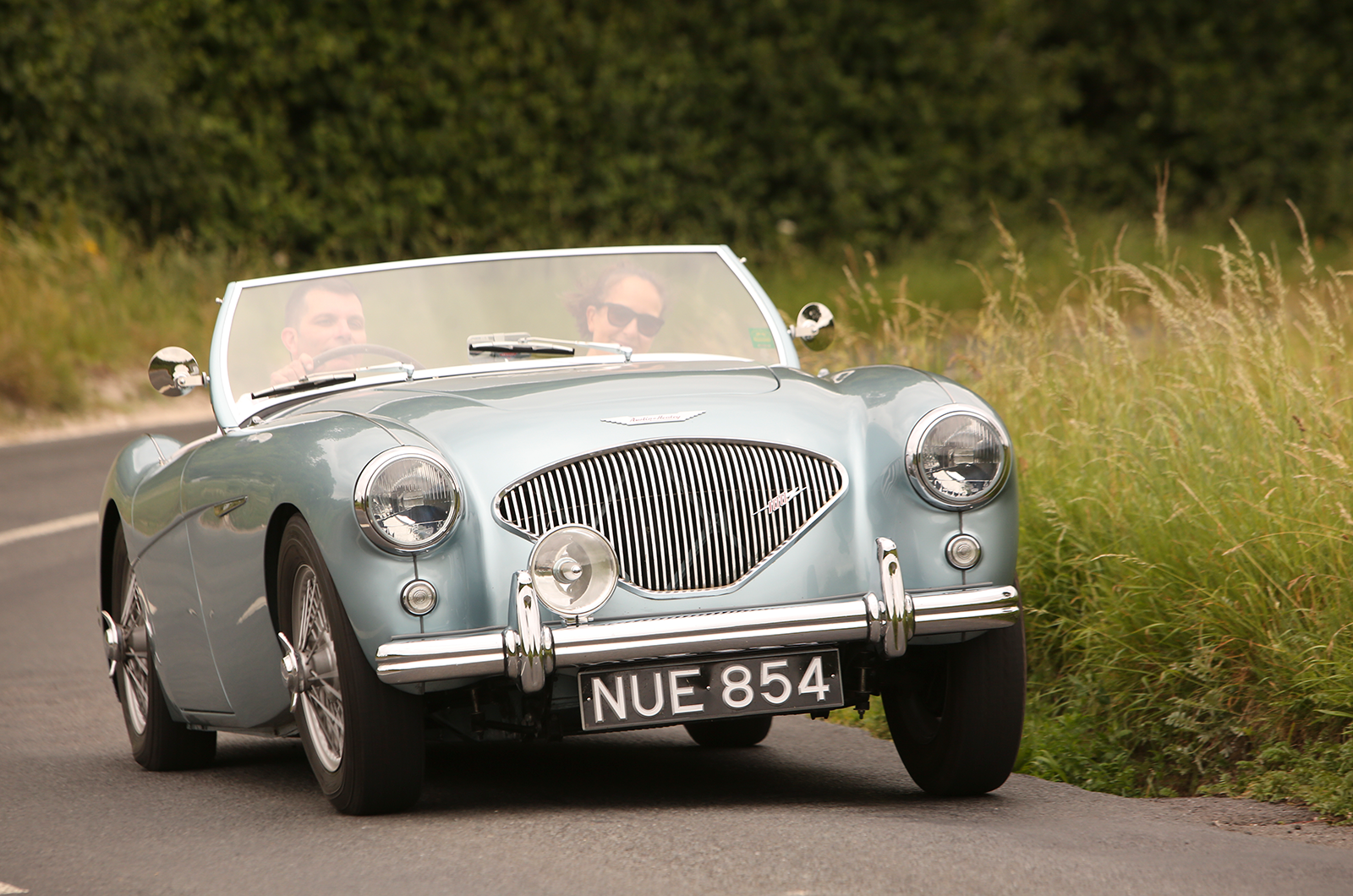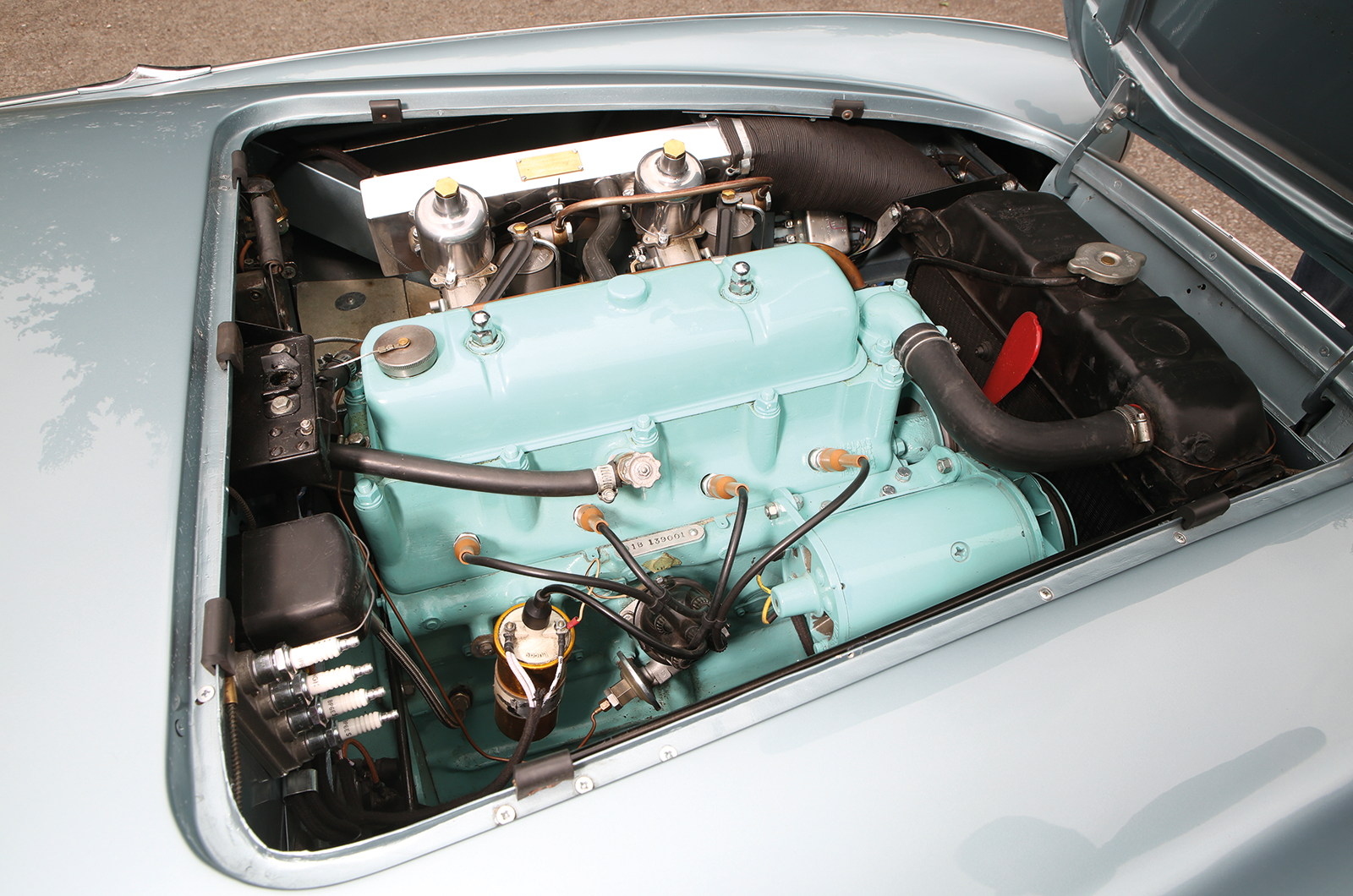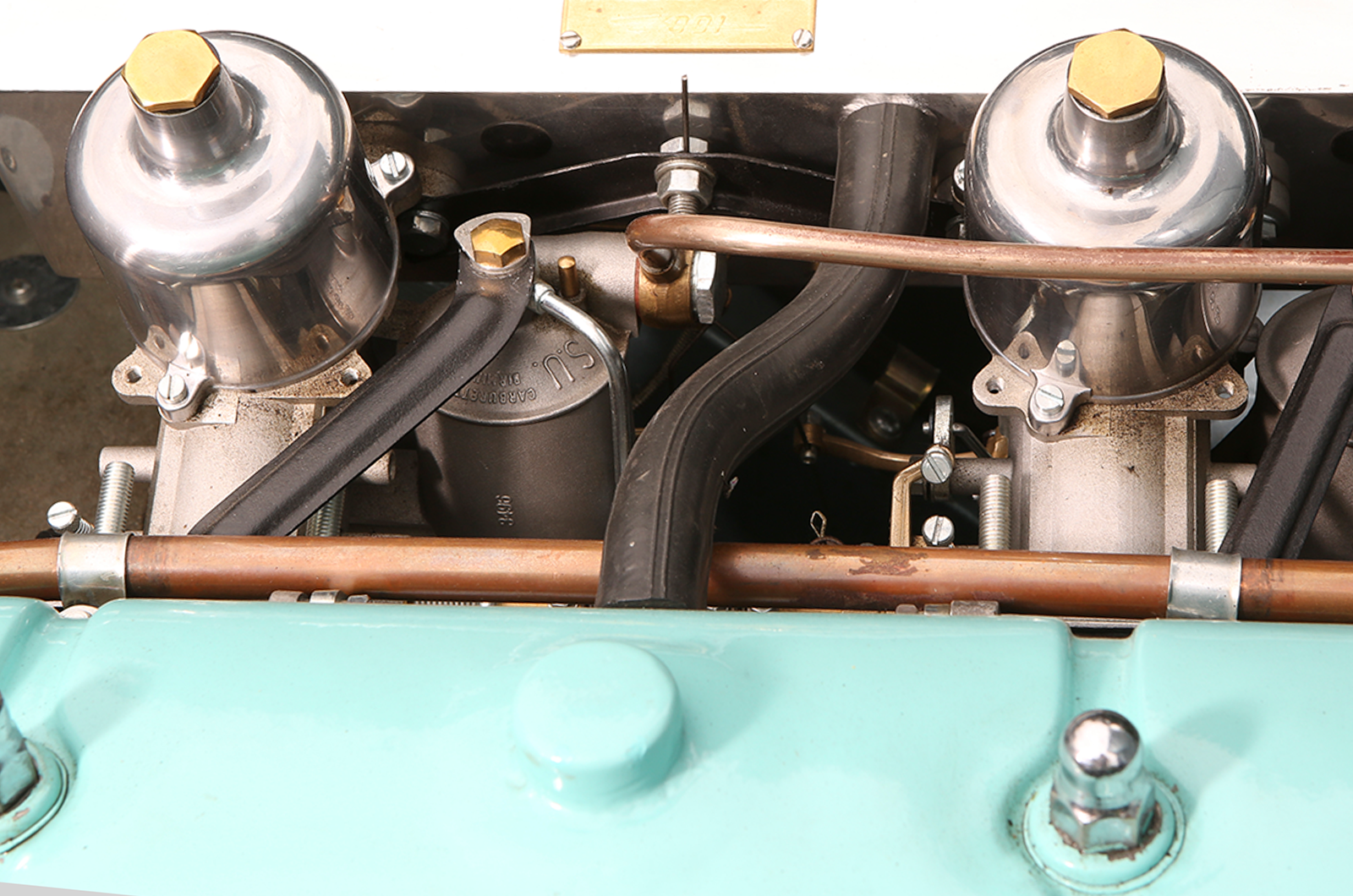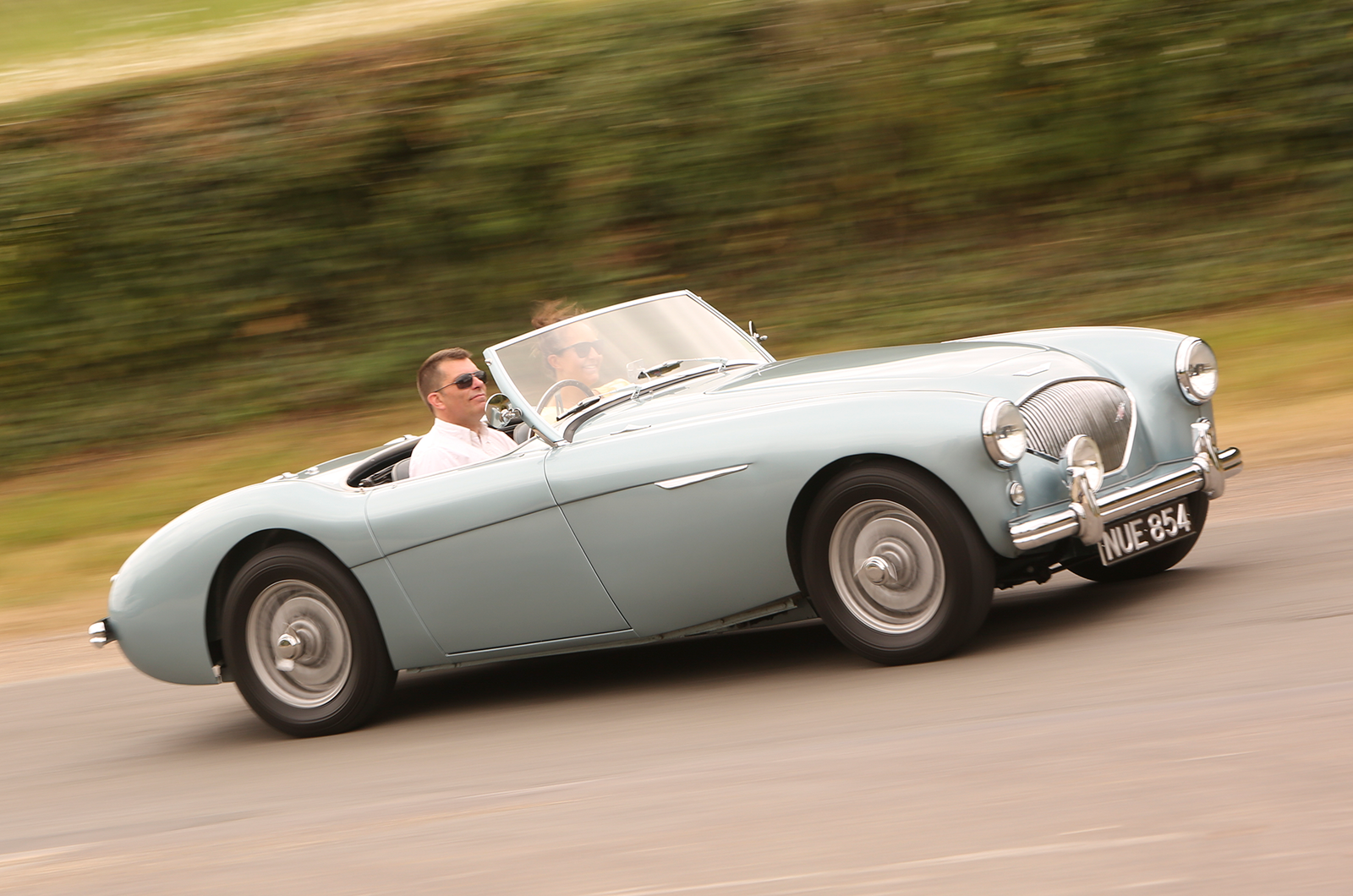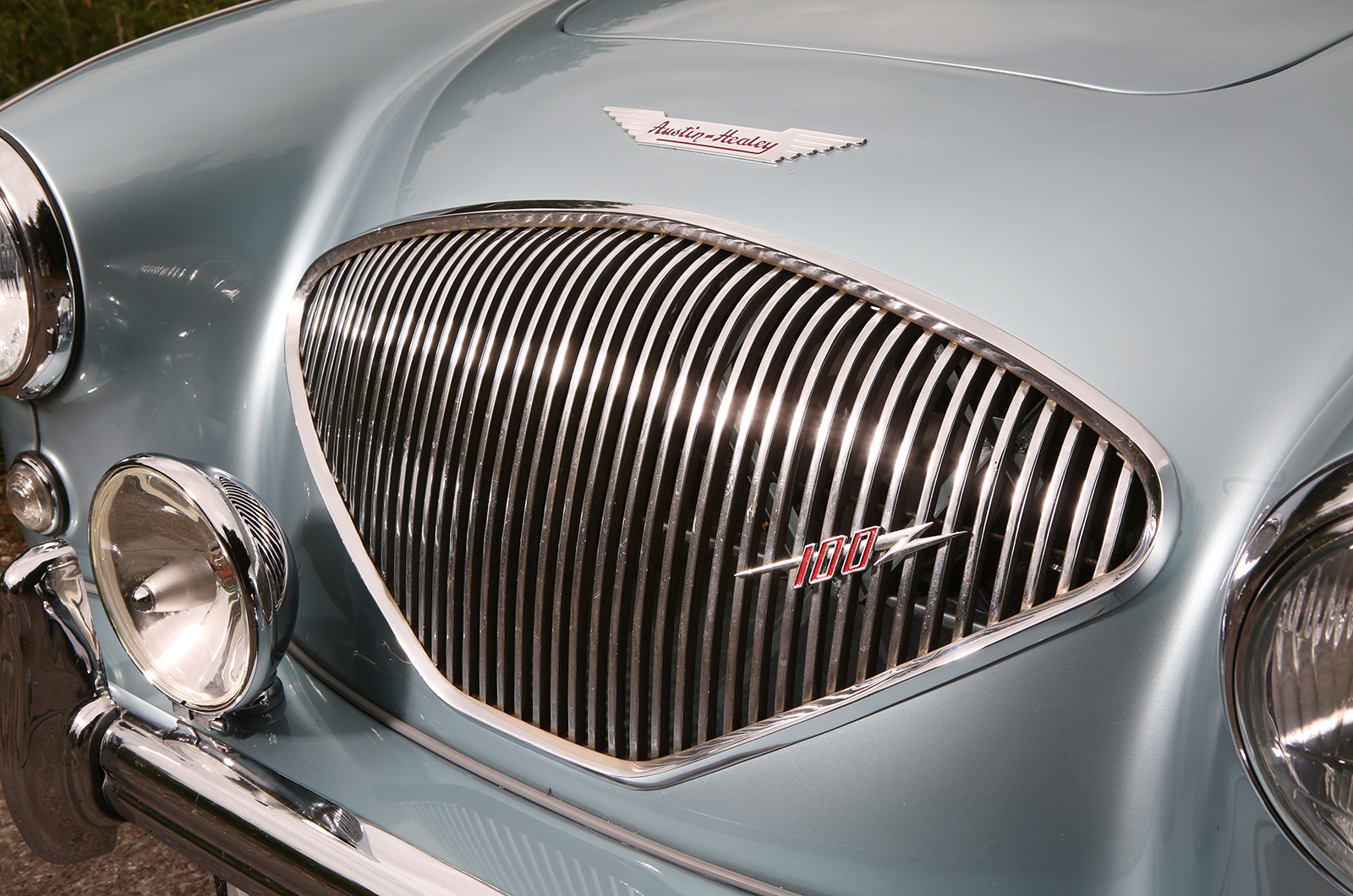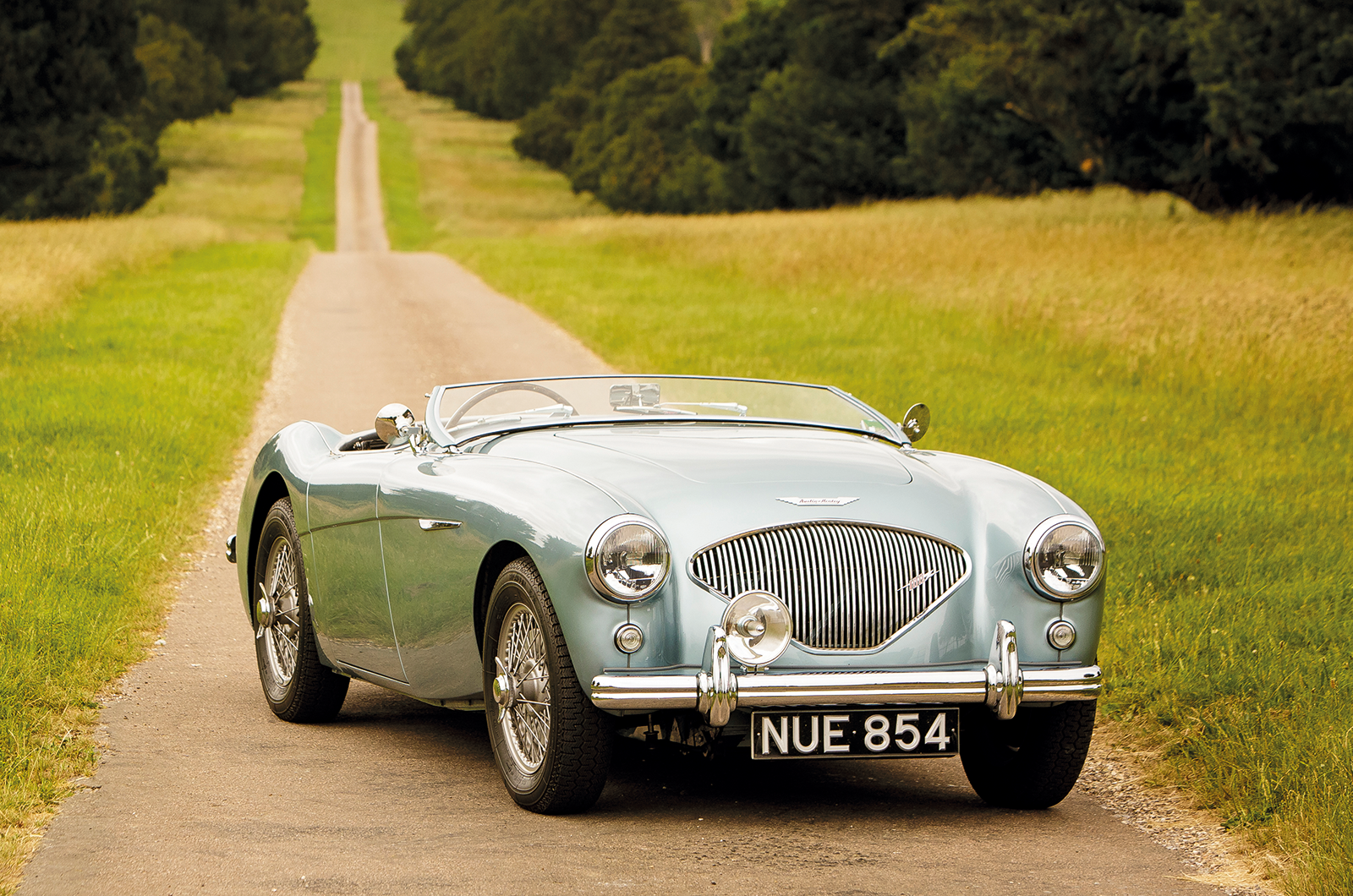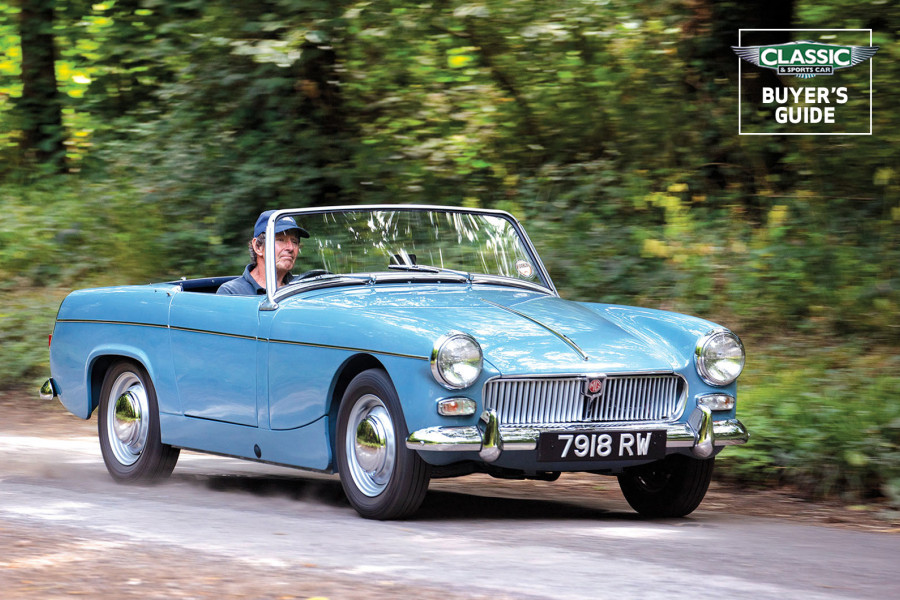The pedal has a direct mechanical linkage to the clutch, and an insensitive foot winds up the engine and driveline, which then amplifies, feeding off itself.
If you get it wrong it’s better to stop or declutch and try again, and you soon find that – with so much torque – you can gently let in the clutch before you get on the throttle, so docile is the big four-pot’s power delivery.
Otherwise it’s a joy, the three-speed with overdrive providing all the ratios you need, flicking between second and overdrive second through a series of twisty bends.
The Austin-Healey’s big ‘four’ runs SU H6s
The A90 transmission retains all four ratios, though first was blanked off for the 100, leaving just three forward gears.
Haig had the first-gear slot uncorked, as was found and re-blanked by a later owner. As it is, it’s pretty much perfectly geared, with overdrive top giving about 25mph per 1000rpm.
Pushing it harder, you feel that oversteer will be the dominant tendency – even on modern radials – though I’d love to try it on crossplies. It would probably drift beautifully, having broken away earlier.
The 100 prototype’s engine is painted in duck egg blue
The brakes are perfectly adequate, even though the big drums are only 1¾in wide, rather than the 2in type on later cars.
It’s one of those cars that you really don’t want to give back. A day in the saddle of this very accomplished yet friendly sports car begs the inevitable question of value.
In the same way that any of the first 200 aluminium-bodied XK120s attracts a premium over the steel versions that were eventually productionised, then, like the first of anything, it will cost more than a steel 100.
‘Pushing it harder, you feel that oversteer will be the dominant tendency…’
As its owner Dixon puts it: “There were 55 100Ss and they’re up to £1million now – and there were only 19 Warwick 100s – so I think this should be getting on for half a 100S.”
Looking back at previous sales sheds some light. NOJ 393, one of the 19 Warwick-built cars, which became the 100S prototype and was implicated in the 1955 Le Mans disaster, was sold in a dilapidated condition by Bonhams at its Brooklands sale on 1 December 2011.
It went for £843,000, almost £¼m over the £440-500k estimate. In the same auction AHX11 – a left-hander – made £102,700.
The recognisable Austin-Healey grille is a hand-made, one-piece item on the 100 prototype
That car was badly restored in the 1990s, and put right some years later. So, although correct in every detail, it can be held to be less original than NUE 854.
NOJ 392, meanwhile, raised £785,500 at the Goodwood Festival of Speed in 2013. AHX19 (NUE 855), the fourth right-hooker from the prototype batch, was knocked down for £164,300 at auction in 2015, unrestored, with a replacement engine and wearing a 100/6 windscreen.
Understandably, Dixon favours the ‘half a 100S’ analogy.
Images: Tony Baker
Thanks to: Bill Rawles Classic Cars
This was first in our August 2017 magazine; all information was correct at the date of original publication
Factfile
Austin-Healey 100
- Construction steel box-section chassis, with aluminium body panels
- Engine all-iron, 2660cc pushrod ‘four’, two SU H6 carburettors
- Max power 100bhp @ 4500rpm
- Max torque 150lb ft @ 2000rpm
- Transmission three-speed manual, LdN overdrive on second and third, RWD
- Suspension: front independent, by double wishbones, coil springs rear live axle, semi-elliptic leaf springs, transverse Panhard rod; lever-arm dampers f/r
- Steering Burman cam and peg
- Brakes Girling drums all round
- Length 12ft 7in (3835mm)
- Width 5ft ½in (1537mm)
- Height 4ft ¼in (1226mm, hood up)
- Wheelbase 7ft 6in (2286mm)
- Track: front/rear 4ft 1in (1245mm)/4ft 2¾in (1290mm)
- Weight 2176lb (987kg)
- 0-60mph 9.3 secs
- Top speed 118mph
Enjoy more of the world’s best classic car content every month when you subscribe to C&SC – get our latest deals here
READ MORE
Austin A90 Atlantic: one for the album
The greatest ’50s sports cars: XK120 vs MGA, AC Ace, Healey 100 & TR3A
Triumph Spitfire vs MGB vs Lotus Elan: a new dawn
Paul Hardiman
Paul Hardiman is a regular contributor to – and former Deputy Editor of – Classic & Sports Car
